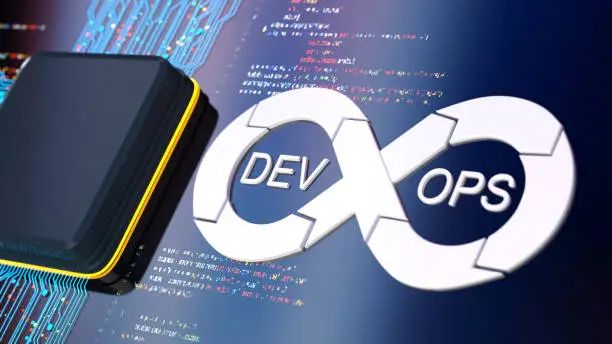Introduction to DevOps
What is DevOps?
If you’ve ever wondered how companies like Amazon, Netflix, or Google manage to push out new features and updates so quickly without breaking anything, the answer often lies in DevOps. Simply put, DevOps is a blend of development (Dev) and operations (Ops) practices designed to shorten the software development lifecycle while delivering high-quality software continuously.
Origins of DevOps
DevOps emerged as a response to traditional software development challenges where developers and operations teams worked in silos, leading to slow releases and frequent bugs. The term was first popularized around 2009 by Patrick Debois, who emphasized the need for better collaboration between these two departments.
The Traditional Software Development Model
Waterfall Model Overview
Before DevOps, most software projects followed the Waterfall model — a linear and sequential approach. You’d have a long development phase, followed by testing, then deployment. Sounds orderly, right? But the reality was often painfully slow and inflexible.
Challenges in Traditional Approaches
The big problem? By the time testing started, developers might have moved on, and any bugs found could mean weeks of fixes. Communication gaps between teams often led to misunderstandings and bottlenecks. This often resulted in delayed launches and frustrated customers.
Core Principles of DevOps
Collaboration and Communication
At the heart of DevOps is collaboration. No more “throwing code over the wall” to the operations team. Instead, developers and operations work hand-in-hand, sharing responsibilities from start to finish.
Continuous Integration and Delivery
Imagine a world where every small change you make to the code is automatically tested and deployed if it passes. That’s what Continuous Integration (CI) and Continuous Delivery (CD) are all about — enabling frequent, reliable releases.
Key Practices in DevOps
Infrastructure as Code (IaC)
Gone are the days of manually configuring servers. With IaC, infrastructure is managed using code, which makes it reproducible, scalable, and less prone to human error.
Automated Testing
Testing no longer waits until the end. Automated testing ensures that every new line of code is verified instantly, catching bugs early when they’re easier and cheaper to fix.
The Role of Culture in DevOps
Breaking Silos Between Teams
DevOps isn’t just about tools — it’s about culture. Breaking down barriers between teams encourages open communication and trust, which are crucial for agile software delivery.
Fostering Ownership and Accountability
When teams share responsibility for the entire lifecycle, from development to production, there’s a stronger sense of ownership, reducing finger-pointing and increasing quality.
Tools That Power DevOps
Popular DevOps Tools Overview
From Jenkins and GitLab CI for automation, to Docker and Kubernetes for containerization and orchestration, the DevOps toolkit is vast and growing.
Choosing the Right Tools
With so many options, how do you pick? It depends on your team’s size, goals, and existing tech stack — but integrating tools that communicate well with each other is key.
Benefits of Adopting DevOps in Software Development
Faster Time to Market
By automating and streamlining processes, DevOps helps companies release features and fixes at lightning speed, giving them a competitive edge.
Improved Product Quality
Continuous testing and monitoring catch issues before they reach users, resulting in more stable, reliable software.
How DevOps Accelerates Software Delivery
Continuous Integration and Continuous Deployment (CI/CD)
This practice automates the process of building, testing, and deploying code — meaning fewer manual errors and faster turnaround times.
Real-time Monitoring and Feedback
With tools like Prometheus and New Relic, teams monitor apps in real-time, catching performance bottlenecks before users do.
Impact of DevOps on Developer and Operations Teams
Enhanced Collaboration
DevOps fosters a culture where developers and operations share goals, tools, and workflows — creating a smoother pipeline and happier teams.
Shared Responsibility
When everyone is accountable for the product’s success, it leads to faster problem resolution and better customer satisfaction.
Challenges and Risks of Implementing DevOps
Organizational Resistance
Change is hard. Some teams resist new workflows or worry about job security, slowing down DevOps adoption.
Security Concerns
Speed mustn’t come at the cost of security. That’s why integrating security early in the process (DevSecOps) is becoming crucial.
DevOps and Cloud Computing: A Powerful Combo
Cloud-Native DevOps
Cloud platforms like AWS, Azure, and Google Cloud have transformed DevOps by providing scalable environments and powerful tools for automation.
Scalability and Flexibility
Cloud infrastructure lets companies scale their applications dynamically, meeting demand without costly hardware investments.
Case Studies: Companies Thriving with DevOps
Amazon’s DevOps Journey
Amazon’s legendary ability to deploy code thousands of times per day comes from their deep investment in automation and a culture of ownership.
Netflix’s Continuous Delivery Success
Netflix uses sophisticated DevOps practices to ensure their streaming service is always up and running, even during massive spikes in usage.
Future Trends in DevOps
AI and Machine Learning in DevOps
AI-powered tools are now optimizing workflows, predicting failures, and automating mundane tasks — making DevOps even smarter.
DevSecOps
Security is no longer an afterthought but a built-in feature throughout development, thanks to DevSecOps practices.
How to Start Your DevOps Journey
Assessing Current Processes
Before jumping in, understand where your team stands. Identify bottlenecks, communication gaps, and automation opportunities.
Training and Skill Development
DevOps requires new skills, so investing in training and certifications is critical for success.
Conclusion: DevOps as a Game Changer
DevOps is not just a buzzword—it’s a fundamental shift in how software is built, tested, and delivered. By bridging the gap between development and operations, fostering collaboration, and leveraging automation, it enables faster, higher-quality software that meets today’s rapid business demands. If your organization hasn’t embraced DevOps yet, the time to start is now.
FAQs about DevOps
1. What is the main difference between DevOps and traditional software development?
DevOps emphasizes collaboration and continuous delivery, breaking down silos between teams, whereas traditional development often follows rigid, sequential phases like the Waterfall model.
2. Can small businesses benefit from DevOps?
Absolutely! DevOps practices can scale to any size and help small businesses improve agility and reduce time to market.
3. What are some popular DevOps tools I should know?
Tools like Jenkins, Docker, Kubernetes, GitLab CI, and Terraform are widely used in DevOps workflows.
4. How does DevOps improve software quality?
By incorporating continuous testing and monitoring, DevOps detects and fixes bugs early, ensuring more stable releases.
5. Is security compromised in DevOps due to faster releases?
No, with the rise of DevSecOps, security is integrated into every stage of development, maintaining strong protection without slowing down delivery.

